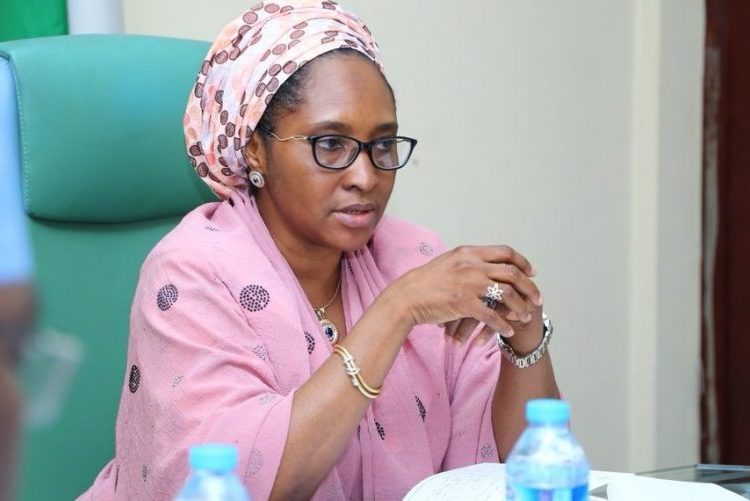Nigeria and a majority of Nigerians are yet to have a feeling of the humongous revenue that has accrued to the federal government, especially in the last four years. Instead, things have steadily been getting worse as they get going despite available resources to the central government, with deterioration of all basic infrastructure which is particularly felt in the roads, educational and health sectors, among others.
LEADERSHIP findings showed that the federal government collected a total of N11,132 trillion as statutory monthly allocation from the Federation Account Allocation Committee (FAAC) between 2017 and 2020 – the last four years. On top of that, the current administration has borrowed N9.117 trillion through domestic and foreign sources within the same period of the last four years. Approximately, the government has received N20.249 trillion as revenues to partly finance its national budget and service debts.
A breakdown of the figures shows that the FAAC disbursed the sum of N2.49 trillion to the federal government of Nigeria in 2020. In 2019 when the federal, states, local governments and other statutory recipients shared N8.15 trillion, the federal government received N3.37 trillion, representing 41.4 per cent of total disbursements. According to official figures, for 2018, total disbursements to the federal, states, and local governments were N3.483 trillion, N2.850 trillion, and N1.667 trillion, respectively. In 2017, disbursements were N2.563 trillion to the federal government, N1.859 trillion to states, and N1.502 trillion to local governments.
Data from the Debt Management Office (DMO) revealed that from the N2.36 trillion borrowed to finance the deficit in the budget in 2017, the government borrowed N2.01 trillion in 2018, N1.61 trillion in 2019 and N4.20 trillion in the reversed 2020 budget. The government blamed the increased borrowing on the economic and social impact of the COVID-19 pandemic. The loan includes N2.3 trillion domestic borrowing, concessional loans from the International Monetary Fund ($3.34 billion) and other multilateral and bilateral lenders.
Not a few people believe that the federal government has failed to do much with the huge revenue available to it over the last four years. The poor state of the nation’s health, education and transport sectors speaks volumes about the failure of government to invest in the critical sectors of the economy to drive productivity and create jobs for the massive number of unemployed Nigerians. In its series of admonition to the federal government, IMF last week called on the Nigerian government to pay for investments in health, in education, in infrastructure, which Nigeria swiftly needs.
Many believe that reforms in the energy sector are going to be paramount for Nigeria. The cost of doing business is very high on account of the inefficiencies in the energy sector, power supply interruptions, and the famous recourse to the use of highly inefficient and harmful generator use up and down the country. “Again, getting power supply, getting policies to make sure that Nigeria resolves this problem once and for all, I think, is also paramount,” IMF director, African department, Abebe Aemro Selassie said last week. Beyond power, Nigeria has one of the worst road infrastructures in Africa. Most of the roads are starkly dilapidated.
LEADERSHIP findings showed that the most of the federal roads across the nation are in poor state. Residents told LEADERSHIP yesterday that the road in Okpella axis of Edo State are not in good shape and the rehabilitation works have been at a snail speed for years. Also in Ondo State, the Akure-Ado and Owo-Benin roads are all death traps. As with the roads, the federal hospitals do not have equipment and the buildings housing them are dilapidated. From Federal Medical Centres that lack MRI machines to University Teaching Hospitals that lack basic equipment, it is the story everywhere.
Also, as reported by LEADERSHIP recently, the states are not any different. Nigerians want the two tiers of government to do more on infrastructural development. Citizens have complained about decaying infrastructure in most states in the country despite them collecting N2.3trillion from Federal Accounts Allocation Committee (FAAC) in 2020. A report by National Bureau of Statistics revealed that the 36 states and the Federal Capital Territory (FCT) collected a total of N2.3trillion from FAAC al location last year.
Findings by LEADERSHIP revealed that most of the states cannot give proper account of using the fund judiciously as there are still a lot of infrastructural decay and poor funding of projects in the states. Speaking to in an exclusive interview with LEADERSHIP, an economist, Mr. Tope Fasua, said, it’s a systemic challenges that needs to be corrected both at the federal and state levels. He said only two states were able to generate as much as it earns from FAAC on a monthly basis, a development, he said, has its negative implications on the overall economy. He charged governments at the federal and states to cut down on bogus expenses, adding that, if this is done, it will create some surplus that could be deployed to other areas of social development.
While urging states to deepen the enforcement of stamp duty and properties tax, among others, to drive revenue internally instead of relying on external funds to run the economy, he called on states to look inward to see what can be done to generate revenue and rely less on federal allocation to perform its civic duties and responsibilities. Associate professor, Department of Commercial and Private Law, Babcock University, Dr. Tayo Bello, on a telephone call with LEADERSHIP ascribed the ugly trend to the fact that monies collected as loans or allocations are many times not properly allocated, or projects not executed in a timely fashion, which may affect the cost of projects.
Referring to timely payment to construction companies to execute contracts, Bello said companies no longer borrow money to execute contracts, but instead execute contracts on pay-as-you-go basis due to the failure by government to pay for job done, which left the companies indebted. He also alluded to exchange rates differentials vis-à-vis costs of materials as contributing factors to the high costs of project execution, hence the humongous amounts in question.





